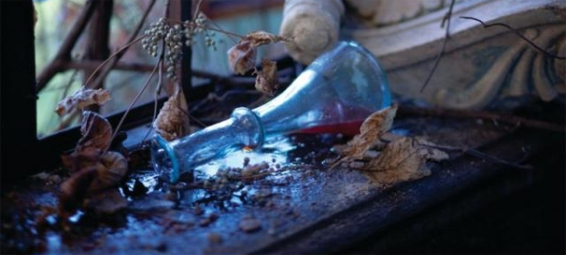Wagner’s Tristan und Isolde poses more than the usual challenges of opera presentation. The new production by the Dallas Opera, which opened Thursday night at Winspear Opera House, answers all of those challenges, rendering that masterpiece from the 19th century as meaningful as ever in the 21st.
Based on a medieval romance, Tristan und Isolde is essentially a four-hour rumination on the nature of romantic love. Traditional staging of Wagner can be tricky at best: neither quasi-realism nor fantastical backdrops are ever entirely successful, and often seem at odds with the glorious music. In this production, designed by Christian Rath, brilliant computer projections on large, frequently moving panels constantly pulled the viewer through hyper-realistic and boldly abstract landscapes. Projections designer Elaine J. McCarthy and her colleagues manage to engage visually while never intruding on Wagner’s score, while always underlining the complex verbal content. At any given moment, the singers might be floating in space, or facing each other across a silk-covered bed, or standing on a beach surrounded by lapping waves, or deep in a woodland. Bold flashes of red—notably in Isolde’s attire and in a recurring diagonal stripe and a flexible rope—stood out against appropriately dark grays, browns, and blacks. The costumes, designed by Susan Cox of the faculty of University of Dallas, were brilliantly ambivalent and, and thought-provoking: the females were clad in a broadly medieval costume, while the men were largely dressed in quasi-fascist military uniforms.
Musically, opening night brought an impeccable reading of the score. Conductor and music director Graeme Jenkins once again proved an amazing ability to create and maintain impetus across a huge time-span—a knack he applies equally well in a wide variety of styles. As in all of his operas, Wagner here demands principal singers of extraordinary lung-power and stamina, and this cast is consistently up to the task. Tenor Clifton Forbis (chair of the voice department at SMU) and soprano Jeanne-Michele Charbonnet were dramatically and vocally powerful; mezzo-soprano Mary Phillips turned in an often entrancing performance as Brangane. Baritone Jukka Rasilainen and bass Kristinn Sigmundsson were equally notable as Tristan’s companion Kurvenal and King Marke.
Production designer Rath, who also served as stage director, likewise introduced a number of dramatic elements to further enrich this production. The physical interaction of Charbonnet and Phillips as Isolde and Brangane suggested an erotic attachment that strengthens the motivation for Brangane’s well-meaning betrayal of the pair in Act I. The staging likewise suggested a similar possibility—and interesting implications—in the relationship of Tristan and King Marke. And, in Rath’s version of the final scene, wonderfully realized by Forbis and Charbonnet, Isolde—already emotionally unstable in Act I—and Tristan have both clearly succumbed to madness as well as a higher, transcendent wisdom. The result of these elements is, in short, an unforgettable and thrilling operatic experience.






